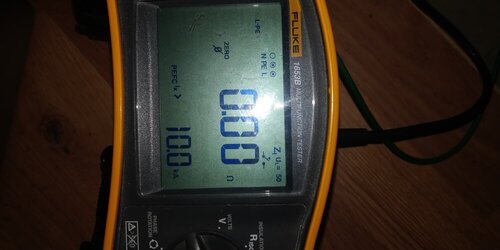G
Gringoking88
Hi all,
Hope you are all well.
I went to do an EICR at a small domestic property supplied by a TN S today, it is wired in singles using the conduit as CPC, however, there are no lugs for fly leads to sockets or light switches. In itself, what does this warrant, C2 / C3, there are only class 2 fittings in use?
Also, upon initial check the incoming fuse carrier was smashed and needed replacing, also Ze was 0.00 with a PFC / PSCC of greater than 10 KA. I advised the client to call DNO to replace fuse carrier, sort the earth and fit an isolator, tbf they atended within a few hours, replaced the fuse carrier, but left the main earth terminal off and said to the client call me back and I can put a clamp on it, rightly or wrong, I revisited and clamped the main earth, however, carried out the Ze again and the same reading is achieved.
Can someone help explain how and why I get that reading and more importantly, how I resolve it?
Many thanks in advance,
Hope you are all well.
I went to do an EICR at a small domestic property supplied by a TN S today, it is wired in singles using the conduit as CPC, however, there are no lugs for fly leads to sockets or light switches. In itself, what does this warrant, C2 / C3, there are only class 2 fittings in use?
Also, upon initial check the incoming fuse carrier was smashed and needed replacing, also Ze was 0.00 with a PFC / PSCC of greater than 10 KA. I advised the client to call DNO to replace fuse carrier, sort the earth and fit an isolator, tbf they atended within a few hours, replaced the fuse carrier, but left the main earth terminal off and said to the client call me back and I can put a clamp on it, rightly or wrong, I revisited and clamped the main earth, however, carried out the Ze again and the same reading is achieved.
Can someone help explain how and why I get that reading and more importantly, how I resolve it?
Many thanks in advance,









